According to bestselling American author Neale Donald Walsch, “Life begins at the end of your comfort zone.” Yet when I find myself attempting to negotiate a smooth passage through an Atlantic breakwater in a kayak, I feel more like my days on earth could come to a crashing end. Mi vida flashes before my very eyes as we wait for the waves to subside off a choppy palm beach in Tenerife.
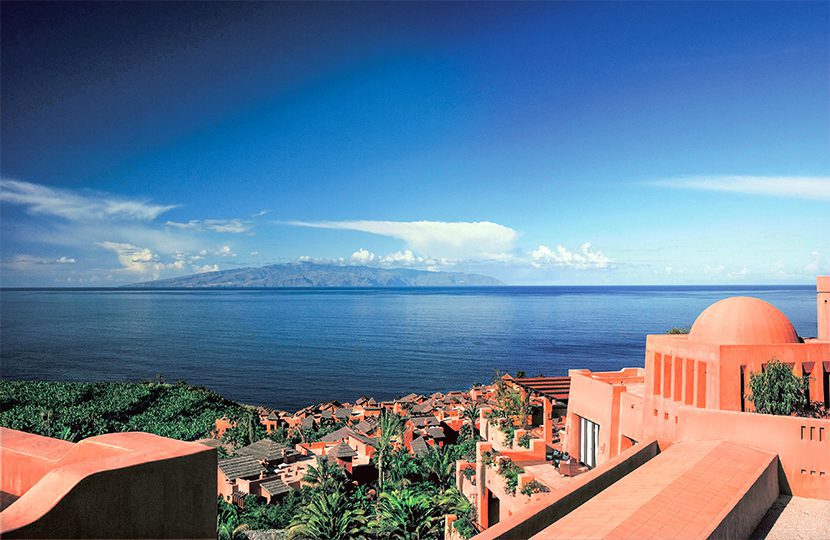
Pretty in pink The Ritz Carlton, Abama
I have taken the advice of Walsch to break out of my comfort zone however. The pleasure plot in question being the giant luxury resort in the south west of the island: The Ritz-Carlton, Abama. The destination of choice of holidaymakers who barely have to dip into their small change to fund a 9.000€-a-night stay in one of Abama’s voluptuous Tagor villas which also comes with a butler and golf buggy.
My co-paddler is John Beckley who has swapped his native South Africa for Tenerife just as I have relocated from the UK to neighbouring Gran Canaria. The plan had been to scale the heights of Teide: Spain’s loftiest mountain which rises 3,718 metres above sea level. Except one of Europe’s sunniest spots is experiencing a rare cloudy day and Tenerife’s tallest tor is lost in a nimbus.
Now there’s Europe and then there’s Europe. Spain colonized the Canary Islands, Tenerife the largest of these magnificent seven isles, during the reign of terror of the Catholic Monarchs, Ferdinand and Isabella. This autonomous community lies around 100km west of the African mainland and closer to 2,000km from the Iberian peninsula.
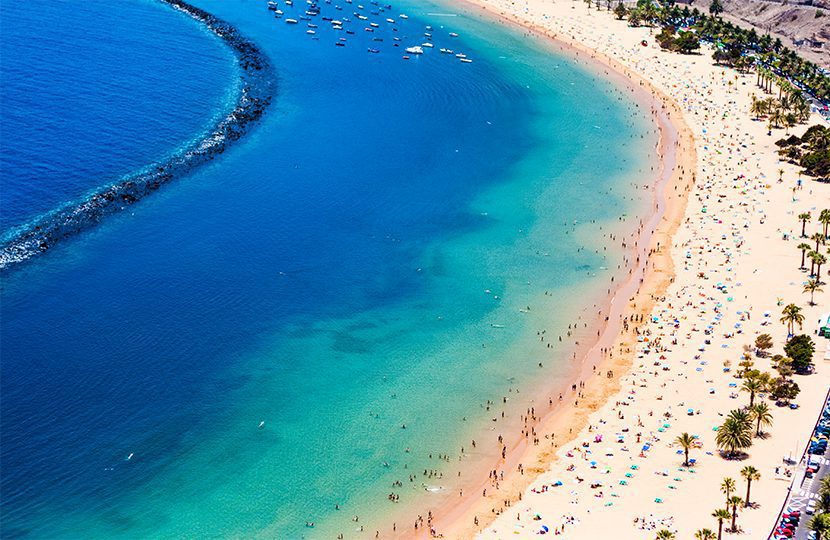
Balmy, palmy island Playa de las Teresitas
A destination in its own right, you won’t want for much at The Ritz-Carlton, Abama whose design apes a Moorish residence (interestingly archaeologists have concluded that the pre-Spanish inhabitants of Tenerife, the Guanches, were landlocked Berber slaves exiled for their sins) fit enough for a regent. My exquisite seventh-floor suite (with bathroom featuring Asprey Cosmetics straight out of London’s Bond Street) overlooks the neighbouring island of La Gomera. As well as the banana plantations which dot the sub-tropical Guía de Isora municipality and further greenery in the form of a 72-par championship golf course designed by erstwhile Ryder Cup golfer Dave Thomas. Sporty types will also appreciate the seven tennis courts available at their disposal whilst absolute beginners or those looking to improve their game might want to enrol for an Annabel Croft Tennis Academy course. There are also four Padel (a squash-tennis hybrid invented in Mexico) courts if you want to try your hand at this sport.
On my first day at the Abama, I decide however to take it easy. As in horizontal. Lolling about in the infinity pool and the spa’s water circuit before taking the cable car down to the hotel’s playa which feels like it’s owned by the resort but isn’t as private beaches are illegal in Spain. There’s also a train (like ones you see along the seaside) to help you get around the Abama.
My first taste of the resort’s renowned culinary offerings (Martín Berasategui’s Basque restaurant M.B has two Michelin stars and Ricardo Sanz’s Kabuki fusion joint one) comes at lunchtime. At the Beach Club. On sultry Tenerife where an Indian Summer lasts into January, I cool down with a gazpacho before tucking into some quintessential finger food of focaccia and French fries washed down with some local wine (Tenerife has established itself as the best and biggest producer of vintages across the Canary Islands) which is surprisingly substantial and a siesta to sleep it off leads to an early night as I fail to wake in time for dinner.
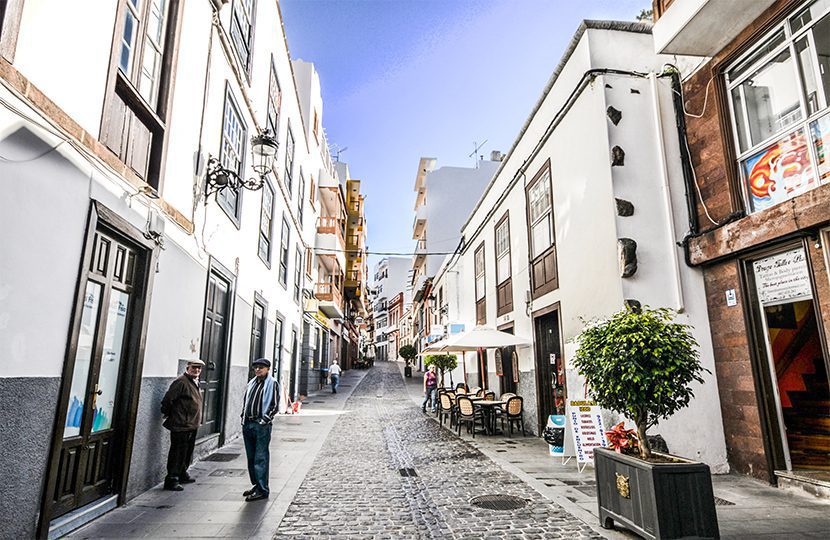
Café society Icod de los Vinos
Day Two finds me in nearby Playa de San Juan. After kayaking with Actividades Náuticas de Tenerife, John and I rehydrate with a caña (a half-pint) of local Dorada lager at the Cofradia de Pescadores Nuestra Señora de la Luz. This is the restaurant owned and run by the Playa de San Juan’s Fishermans’ Guild, so those fruits of the sea taste as fresh as if they’ve just fallen from the metaphorical tree.
It’s a little early for lunch however. So we take a mini cliffside hike to what appears to be a ruin of a hermitage. There are no signposts to confirm our suspicions but later research reveals that the abandoned building is in fact a disused pumphouse.
Heading back to the port, we take our pick from one of the lively promenade eateries. Restaurante Marlin ticks the boxes on the ocean-breeze and people-watching front. After breakfasting like a king at the Abama’s buffet La Veranda (Bucks Fizz, fruit, cereal, omelette, cheese, and coffee), I lunch like a prince with a classic avocado and tomato salad followed by grilled cheese with mojo (the Canarians don’t do spices apart from this piquant condiment which typically combines chilli, cumin, and garlic). There’s no room for dessert.
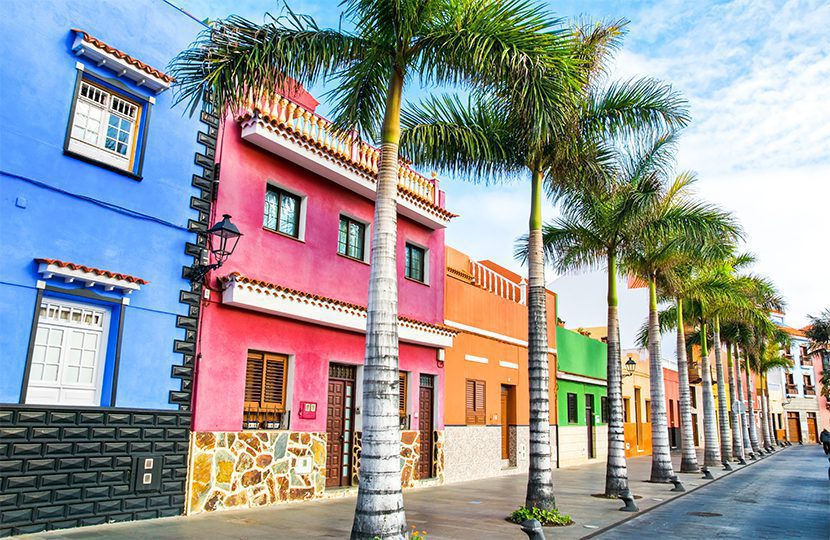
Colourful houses and palm trees on street in Puerto de la Cruz by Olena Tur
I’ve hopped over from my home island of Gran Canaria for very much a full weekend. That’s the beauty of a Canary Islands visit: the ease with which you can travel to the other isles (with the eastern ones of GC but particularly Fuerteventura and Lanzarote being more arid whilst the western ones including Tenerife, El Hierro, La Gomera, and La Palma are more verdant) by ferry or plane.
Tenerife’s a great family destination. Rewind to last summer and myself, wife and three sons are heading over to Siam Park in the south of the island’s touristy Costa Adeje. This Thai-themed water park has been consistently voted the world’s number one since opening in 2008 and I brave the Tower of Power, a vertical 80km per hour drop passing through an aquarium hosting both sharks and rays.
A useful tip is to buy a twin ticket which includes entry to sister park: Loro Parque. This zoo’s situated on the other side of Tenerife, on the island’s north coast. In Puerto de la Cruz, Tenerife’s original resort which attracted wealthy travellers from more northerly climes from the 18th century onwards with the climate considered a form of treatment with the island, complete with natural swimming pools which can resemble one big outdoor spa thanks to the surge of the Atlantic.
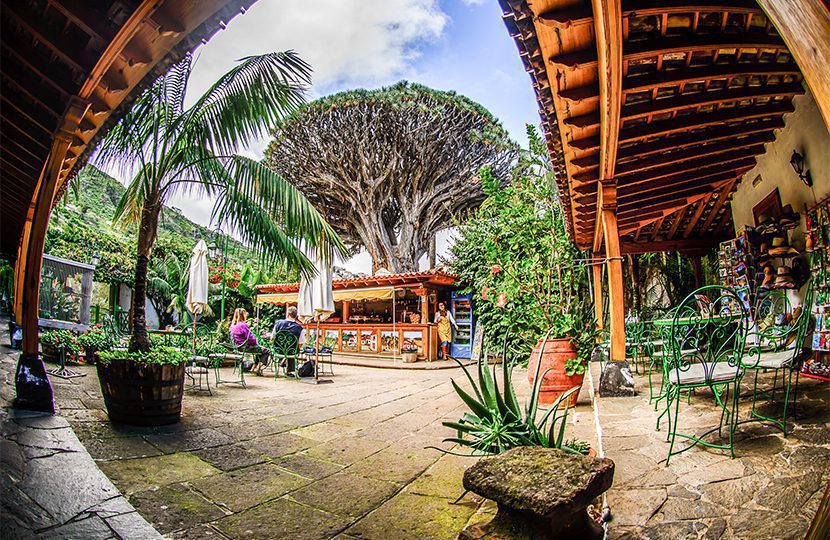
Tree’s a crowd Icod de los Vinos
Tenerife’s the most popular of the Canary Islands, which has resulted in the world’s most famous chains opening hotels here. For an altogether different stay, how about using ITER’s Casas
Bioclimáticas as a base? These ecological houses are the product of an architectural competition and part of a working technological park, which feels on one overnight adventure there, the very antithesis of a resort with my breakfast interrupted by a pair of scientists taking the temperature of my Telly-Tubby-style abode.
ITER’s handily placed for El Medáno, one of the gustiest locations on the island. This has made it a firm favourite with international kitesurfers and windsurfers. The laidback vibe is infectious with a dress-less policy resulting in a uniform T-shirt, shorts, and flip-flops get-up.
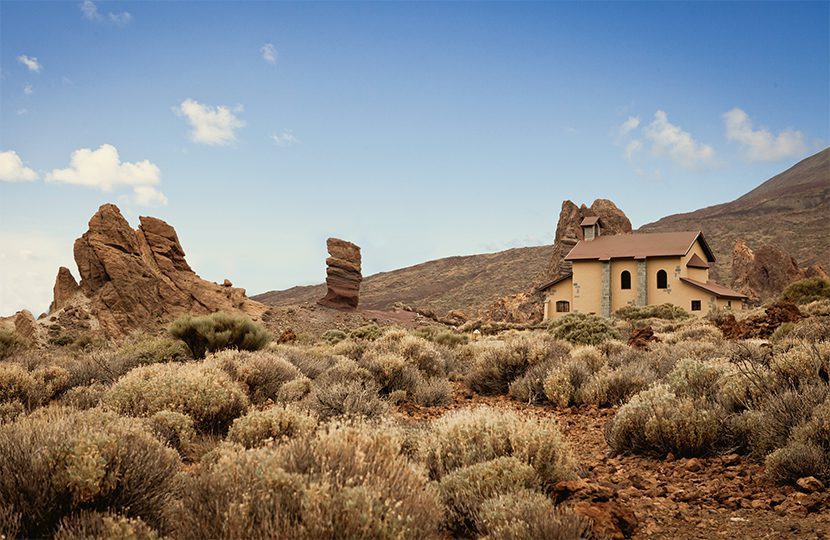
Home alone Roques de García
As a family, we love to lose ourselves on Tenerife beyond the main resorts of Los Cristianos and Las Américas, in the likes of UNESCO-World-Heritage-listed San Cristóbal de la Laguna. The location of the Canary Islands’ oldest university, this is one pedestrian-friendly town. If the island’s a continent in miniature due to its range of flora and climactic gulf between a colder north and warmer south, La Laguna’s cobbled streets and historic buildings make it a bonsai Cambridge.
Having toured Lanzarote’s celebrated La Geria wine region, I’d like to return to Tenerife to navigatethe fellow Canary Island’s very own Wine Route. This starts in whitewashed Tegueste in north-east Tenerife where vines were introduced by Catholic missionaries. Passing through Tacoronte, home to some of the island’s most revered vintages, and cliff-perching El Sauzal which boasts the Casa Museo Insular de la Vid y el Vino (Island Vine and Wine House Museum) before ending in marine and green Santa Úrsula.
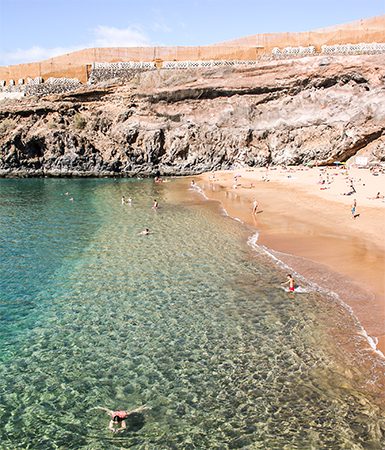
Life’s a beach Playa de Abama
The wine harvest doesn’t only bring bottles of vino to the table as I discover on a chance encounter deep in the interior. As Tenerife’s guachinches pop up in locations which can range from a converted garage to the edge of a plantation. These temporary restaurants are set up to distribute the surplus of local wine and offer a cheap introduction to the traditional Canarian food dishes which accompanies the booze.
If you like to go native on holiday like me, pop by capital Santa Cruz de Tenerife and the Estadio Heliodoro Rodríguez López. This is where local heroes CD Tenerife play and every time I go, I flash back to the very first time of seeing them lose 2-0 to the Spanish mainland’s Sevilla in September 1996 as young and old tuck into a matchday snack of sunflower seeds. Currently they’re trying to return to a top flight they very nearly joined again following a 2016-17 play-off defeat to Madrid’s Getafe.
If you’re adventurous enough to leave the bubble of the resorts, you might be surprised to find the beaches elsewhere more black than blond. This is because they’re composed of volcanic sand rather than grains imported from the Sahara in the likes of the beach at Abama and, my personal favourite, the island’s picture-postcard Las Teresitas close to the fishing village of San Andrés with some of the best seafood restaurants on the island. But, as I discovered kayaking, Tenerife reveals another, altogether wilder, side when you exit its comfort zone(s). ◼

